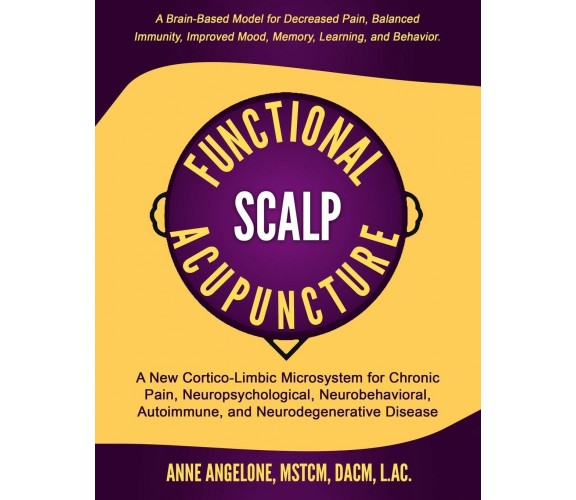Note:
The Functional Scalp Acupuncture (FSA) model promotes the application of neuroscience and evidenced-based acupuncture research to the treatment of chronic pain, depression, anxiety, schizophrenia, autism spectrum disorder (ASD), attention-deficit-hyperactivity-disorder (ADHD), obsessive-compulsive disorder (OCD), autoimmune, and Alzheimer’s disease. Neuroscience has dramatically increased our knowledge and understanding of the underlying dysfunction in each of these conditions. As we shall soon discover, each disorder has a well-established ’neurobiological signature’ that can give us clues as to where the imbalances lie and how to improve functional brain integration. In recent years, developments in neuroscience have offered significant breakthroughs in understanding the brain chemistry and neurobiology behind the symptoms associated with neuropsychiatric, neurobehavioral, neurodegenerative, and autoimmune disorders. From a neurobiological perspective, all of these disorders stem from a functionally disconnected and, therefore, asynchronous brain. Notably, in all of these disorders, the root cause can, in part, be explained by the lack of top-down control from the prefrontal cortex to subcortical limbic structures. This setup creates asynchrony, where brain structures, networks, and regions can become functionally disconnected and out of sync with each other. As a result of this disconnection, learning problems, memory issues, emotional, immune, sensory, social, and behavioral dysfunctions are bound to result. In the Functional Scalp Acupuncture model, an asynchronous brain is responsible for many of the physical, mental, emotional, and social difficulties related to the whole spectrum of neurobehavioral, neuropsychiatric, neurodegenerative, and autoimmune conditions. We can consider that they are all disorders related to cognitive, sensory, motor, and emotional regulation where the rhythm and timing are out of sync in one or more parts of the brain. They all are also disorders where inflammation is rampant. Contemporary acupuncturists need a comprehensive program that targets the primary problems – functional disconnection and inflammation. Lack of functional connectivity plus inflammation in our patient’s brains results in many of the symptoms that present in our clinics. In light of what we now know, we can start to understand all disorders as asynchronous brain structures and networks that are churning out the neurophysiology that creates symptoms. The research can help us to become more astute at identifying symptoms that signify brain asynchrony in specific receiving and processing centers, e.g., from the midbrain, the thalamus, the basal ganglia, and somatosensory cortex, to limbic, sensory, and cognitive integration areas such as the insular cortex, dorsolateral prefrontal cortex, ventromedial PFC, and the orbitofrontal cortex. It can also help clue us in to brain network involvement, neurotransmitter imbalances, and synaptic impairment. In the FSA model, decreasing inflammation and improving the function of the prefrontal cortex, the somatosensory cortex, the motor cortex, and the association cortices, (as well as supporting functional connectivity to limbic structures), leads to brain integration and resolution of symptoms. The revolutionary import is that we can now consider depression, anxiety, schizophrenia, autism, ADHD, OCD, autoimmune, and Alzheimer’s disease as brain asynchrony in need of balance. |








